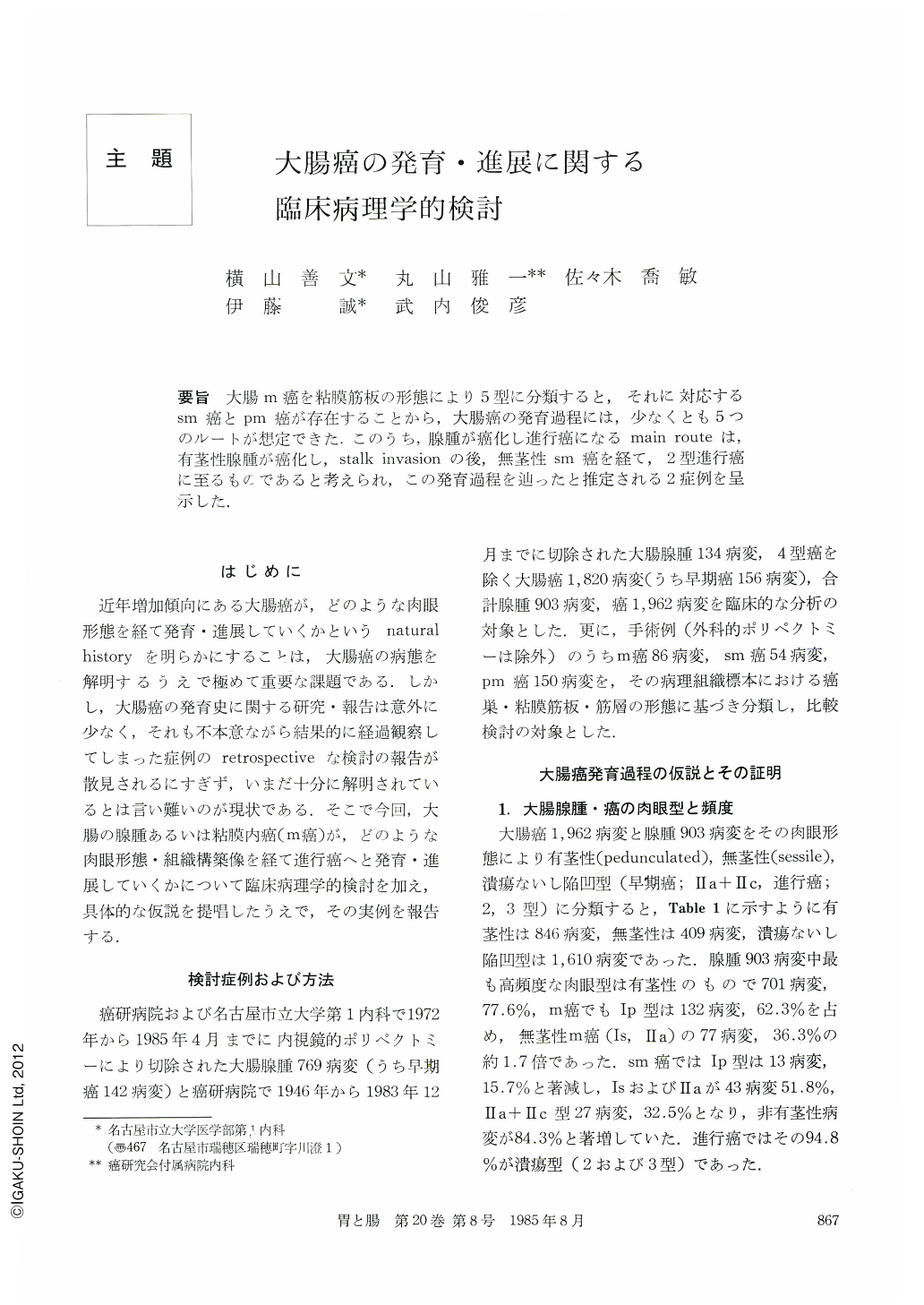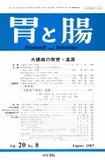Japanese
English
- 有料閲覧
- Abstract 文献概要
- 1ページ目 Look Inside
- サイト内被引用 Cited by
要旨 大腸m癌を粘膜筋板の形態により5型に分類すると,それに対応するsm癌とpm癌が存在することから,大腸癌の発育過程には,少なくとも5つのルートが想定できた.このうち,腺腫が癌化し進行癌になるmain routeは,有茎性腺腫が癌化し,stalk invasionの後,無茎性sm癌を経て,2型進行癌に至るものであると考えられ,この発育過程を辿ったと推定される2症例を呈示した.
The study revealed how adenoma and early cancer of the large bowel developed into advanced cancer.
Method: Specimens used were those which had been operated on over a period of 35 years from 1946 to 1983 at the Cancer Institute Hospital. There were 86 specimens of mucosal cancer (m-ca). 54 specimens with submucosal invasion (sm-ca). 150 specimens in which the cancer was limited to the muscle layer proper (pm-ca).
The specimens were classified by taking a cross-section of the muscularis mucosae and measuring the maximum diameter and comparing it with the depth to which the cancer had invaded the bowel.
Results: 78% of the adenomas and 62% of the mucosal cancers were of the pedunculated type.
Invasive pedunculated cancers decreased in size by 16%. Sessile and flat-elevation type cancers increased in size by 52%. Centrally depressed malignancy types increased in size by 33%. Advanced ulcerating cancers increased in size by 95%, in proportion to the depth of invasion into the bowel.
m-ca were classified into five types, A, B, C, D and E taking into consideration whether they were sm-ca or pm-ca respectively.
The average maximum diameters at each stage of cancerous invasion depth were able to be tabulated as shown in Fig.4.
The maximum diameter of types A, B, and D increased by simple progression at each stage of invasion depth. No relationship between maximum diameter and invasion depth could be observed in types C and E. The course taken by E type is that of the so-called malignant villous tumor.
Conclusion: Mucosal cancer was classified into five different types as they appeared in the muscularis mucosae. The forms of invasive and pm-ca can be classified according to the form of the original mucosal cancer. There were at least five courses taken in the evolution of mucosal cancer to advanced cancer. Almost all so-called malignant villous tumors invaded the lower layers without any changes of maximum diameter of the tumor.
The most frequent course taken by adenoma on its way to advanced cancer was from being a pedunculated adenoma to becoming, through progressive stages, a pedunculated mucosal cancer. Following stalk invasion, sessile invasive cancer evolved, and this finally developed into advanced ulcerating cancer.

Copyright © 1985, Igaku-Shoin Ltd. All rights reserved.


